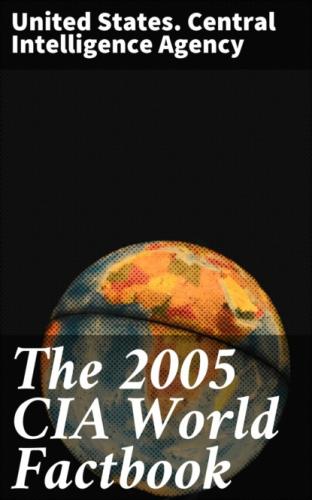Land boundaries:
total: 5,198 km
border countries: Democratic Republic of the Congo 2,511 km (of
which 225 km is the boundary of discontiguous Cabinda Province),
Republic of the Congo 201 km, Namibia 1,376 km, Zambia 1,110 km
Coastline:
1,600 km
Maritime claims: territorial sea: 12 nm contiguous zone: 24 nm exclusive economic zone: 200 nm
Climate:
semiarid in south and along coast to Luanda; north has cool, dry
season (May to October) and hot, rainy season (November to April)
Terrain:
narrow coastal plain rises abruptly to vast interior plateau
Elevation extremes:
lowest point: Atlantic Ocean 0 m
highest point: Morro de Moco 2,620 m
Natural resources:
petroleum, diamonds, iron ore, phosphates, copper, feldspar, gold,
bauxite, uranium
Land use: arable land: 2.41% permanent crops: 0.24% other: 97.35% (2001)
Irrigated land:
750 sq km (1998 est.)
Natural hazards:
locally heavy rainfall causes periodic flooding on the plateau
Environment - current issues:
overuse of pastures and subsequent soil erosion attributable to
population pressures; desertification; deforestation of tropical
rain forest, in response to both international demand for tropical
timber and to domestic use as fuel, resulting in loss of
biodiversity; soil erosion contributing to water pollution and
siltation of rivers and dams; inadequate supplies of potable water
Environment - international agreements:
party to: Biodiversity, Climate Change, Desertification, Law of the
Sea, Ozone Layer Protection, Ship Pollution
signed, but not ratified: none of the selected agreements
Geography - note:
the province of Cabinda is an exclave, separated from the rest of
the country by the Democratic Republic of the Congo
People Angola
Population:
11,190,786 (July 2005 est.)
Age structure:
0–14 years: 43.4% (male 2,454,209/female 2,407,083)
15–64 years: 53.7% (male 3,059,339/female 2,955,060)
65 years and over: 2.8% (male 139,961/female 175,134) (2005 est.)
Median age:
total: 18.12 years
male: 18.12 years
female: 18.11 years (2005 est.)
Population growth rate:
1.9% (2005 est.)
Birth rate:
44.64 births/1,000 population (2005 est.)
Death rate:
25.9 deaths/1,000 population (2005 est.)
Net migration rate:
0.28 migrant(s)/1,000 population (2005 est.)
Sex ratio:
at birth: 1.05 male(s)/female
under 15 years: 1.02 male(s)/female
15–64 years: 1.04 male(s)/female
65 years and over: 0.8 male(s)/female
total population: 1.02 male(s)/female (2005 est.)
Infant mortality rate:
total: 191.19 deaths/1,000 live births
male: 203.68 deaths/1,000 live births
female: 178.07 deaths/1,000 live births (2005 est.)
Life expectancy at birth:
total population: 38.43 years
male: 37.28 years
female: 39.64 years (2005 est.)
Total fertility rate:
6.27 children born/woman (2005 est.)
HIV/AIDS - adult prevalence rate:
3.9% (2003 est.)
HIV/AIDS - people living with HIV/AIDS:
240,000 (2003 est.)
HIV/AIDS - deaths:
21,000 (2003 est.)
Major infectious diseases: degree of risk: very high food or waterborne diseases: bacterial and protozoal diarrhea, hepatitis A, typhoid fever vectorborne diseases: malaria, African trypanosomiasis (sleeping sickness) are high risks in some locations respiratory disease: meningococcal meningitis water contact disease: schistosomiasis (2004)
Nationality:
noun: Angolan(s)
adjective: Angolan
Ethnic groups:
Ovimbundu 37%, Kimbundu 25%, Bakongo 13%, mestico (mixed European
and native African) 2%, European 1%, other 22%
Religions:
indigenous beliefs 47%, Roman Catholic 38%, Protestant 15% (1998
est.)
Languages:
Portuguese (official), Bantu and other African languages
Literacy:
definition: age 15 and over can read and write
total population: 66.8%
male: 82.1%
female: 53.8% (2001 est.)
Government Angola
Country name:
conventional long form: Republic of Angola
conventional short form: Angola
local long form: Republica de Angola
local short form: Angola
former: People's Republic of Angola
Government type:
republic, nominally a multiparty democracy with a strong
presidential system
Capital:
Luanda
Administrative divisions:
18 provinces (provincias, singular - provincia); Bengo, Benguela,
Bie, Cabinda, Cuando Cubango, Cuanza Norte, Cuanza Sul, Cunene,
Huambo, Huila, Luanda, Lunda Norte, Lunda Sul, Malanje, Moxico,
Namibe, Uige, Zaire
Independence:
11 November 1975 (from Portugal)
National holiday:
Independence Day, 11 November (1975)
Constitution:
11 November 1975; revised 7 January 1978, 11 August 1980, 6 March
1991, and 26 August 1992; note - new constitution has not yet been
approved
Legal
